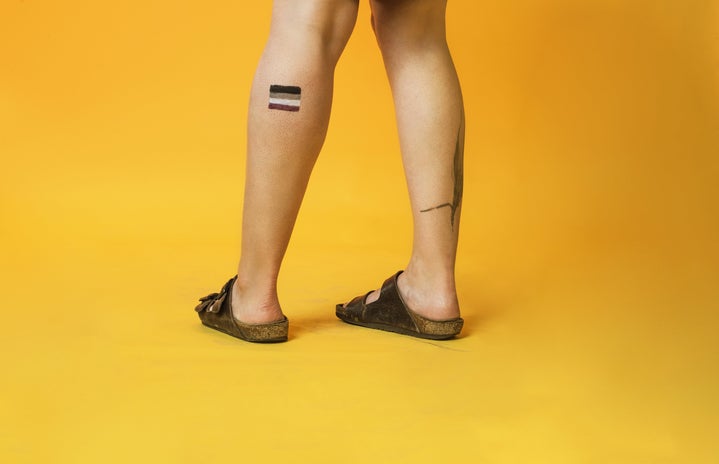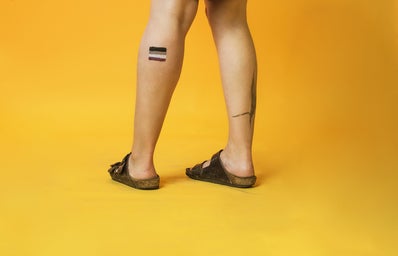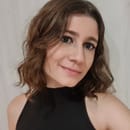It’s pride month! And the A in LGBTQIA does not stand for allies, but for asexuals – a spectrum and umbrella term that goes way beyond not being sexually attracted to people. Unfortunately, this sexual orientation is not very mentioned in the media, but that doesn’t make it less important.
A person who identifies as asexual or ace has little to no sexual attraction toward others and would rather have an emotional connection to a physical one. In other words, a person who identifies with this sexuality can fall in love and make out with people but doesn’t feel the desire to take it to the next level.
Under the umbrella
Asexual is a spectrum and umbrella term, which means that people might have different intensities of sexual attraction, leading to different sexualities. Some of the terms inside the spectrum are:
- Aromantic: Not feeling romantic attraction. Someone who doesn’t feel sexual and romantic attraction. It can also be called Aroace.
- Demisexual: The sexual attraction only appears once a deep emotional connection is formed with someone.
- Greysexual: Someone who rarely experiences sexual attraction and only feels it under certain conditions.
Wrong stereotypes
Our society values a lot sexual and romantic relationships, and when a person doesn’t feel the need to have those things an incorrect image is created. Asexuality isn’t the abstinence of sex because of a bad relationship or religious reasons, fear of intimacy, or even the inability to find a partner. It’s not a phase, a choice, or a dysfunction.
It is important to say that people in the ace spectrum can fall in love, experience orgasm, engage or not in sexual activities, get married, and have kids.
Media representation
Representation in the media is very important because it’s a way of seeing yourself through others’ eyes. Throughout the years, LGBT characters have increased in films and tv shows, but asexual representation has not grown at the same pace, and rarely is done the right way. Let’s see some examples of what has been good or bad:
The good side:
- Bojack Horseman:
-
In this Netflix animated series, it is possible to find a good representation. One of the main characters, Todd Chavez, is an asexual character and this aspect is covered in many episodes.
Apart from other representations, Todd is seen as a fun guy, his sexuality is never used as a joke and his self-discovery is represented throughout the series and not only in one episode. In the third season, he is in doubt about being gay, straight, or “nothing”, but in season five he proudly labels himself as asexual.
- Sex education
-
This is another Netflix series and, as the name makes clear, the episodes talk a lot about sexual activities and orientations. Florence is a character that appears for the first time in season two. By playing a part in the Romeu and Juliet play, she gets conflicted about the lack of sexual chemistry with her stage partner, and when she talks with Otis – a student and amateur sex counselor – he insists that Florence just hadn’t found the right person yet. But, of course, Otis was very wrong on that one.
Later on, she talks with Jane, who is a sex therapist and is working on the sex-ed school curriculum. One of the first things Flo says is that she might be broken, but Jane reminds her that sex doesn’t make us whole, so she can’t be broken. With that, the shows remind us that asexuality exists.
The bad side:
- House, M.D
-
Let’s talk about bad representation. In episode eight of season nine of the medical series House, a man patient says that he and his wife are an asexual couple. Dr. House doesn’t have an appropriate reaction as he states: “[Sex] is a fundamental drive of our species, sex is healthy. Lots of people don’t have sex. The only people who don’t want it are either sick, dead, or lying.”
If that wasn’t enough, he later compares the wife to a giant pool of algae, referring to asexual organisms in biology. Not cool, doctor! But it can get worse: the clinical case is concluded as a brain tumor, which supposedly leads to the lack of sexual desire in the patient. With that, the wife reveals that had she lied all the time about not wanting to have sex. This is invaliding asexuality.
They are also in books
Maybe books have achieved more success when talking about LGBTQIA+ representation and luckily we have some asexual characters in good books.
- Radio Silence
-
Written by Alice Oseman, you may know as the creator of Heartstopper. Aled Last is the main character in Radio Silence and, during the book, he finds that he is demisexual. In a conversation with his boyfriend Daniel, he says: “Asexuality means someone who doesn’t feel, like, sexually attracted to anyone. And some people feel like they are partly asexual, so they only feel sexually attracted to people who they know really, really well. People they have an emotional connection with”.
- Loveless
-
This book is also by Alice Oseman, who has previously said that she identifies with the asexual spectrum. Georgia War is the main character in Loveless and throughout the book, we follow her journey in understanding what she is. After talking with people in the community, Georgia comes out as AroAce (aromantic and asexual).
- Let’s talk about love
-
With a Black main character and a Japanese love interest, this book follows Alice, who ended up her relationship because her girlfriend couldn’t accept her asexuality. When Alice is done with love, Takumi enters her life, making her question if she only wants a friendship or a relationship.
Who you should follow
The best way of understanding sexual orientation is by hearing from people that are part of the community. So here are so people you should follow to know more about asexuality:
- Yasmin Benoit
-
Yasmin is a Model and creator of the #ThisIsWhatAsexualLooksLike movement. In an essay for Glamour Magazine UK, she said: “I live a perfectly happy and fulfilled life as a Black asexual, aromantic woman. I don’t need a partner to complete me – I’m complete just the way I am. That’s why I use my platform to fight against asexuality stigma, dispel myths and help empower the ace community.”
- Sriti Jha
-
Sriti is an artist and during the Indian spokenfest, she performed a parody of “Everybody”, by Backstreet Boys, singing: “I am asexual / Yeah / I’m not the only one / I am everything I need you better recognize me now”.
Get it now?
As we can see, the stereotype that asexuals are only people who don’t have sex is very equivocated. This is a type of sexuality just like Lesbian, Gay, Bi, and Pan, which means if you respect and support them, there is no reason to not do that with asexuals. Yes, there is a long way to go in getting good representation and that will only happen if people bring it to the spotlight. So read, listen and talk about it!
————————
The article above was edited by Julia Queiroz.
Liked this type of content? Check Her Campus Casper Libero for more!


